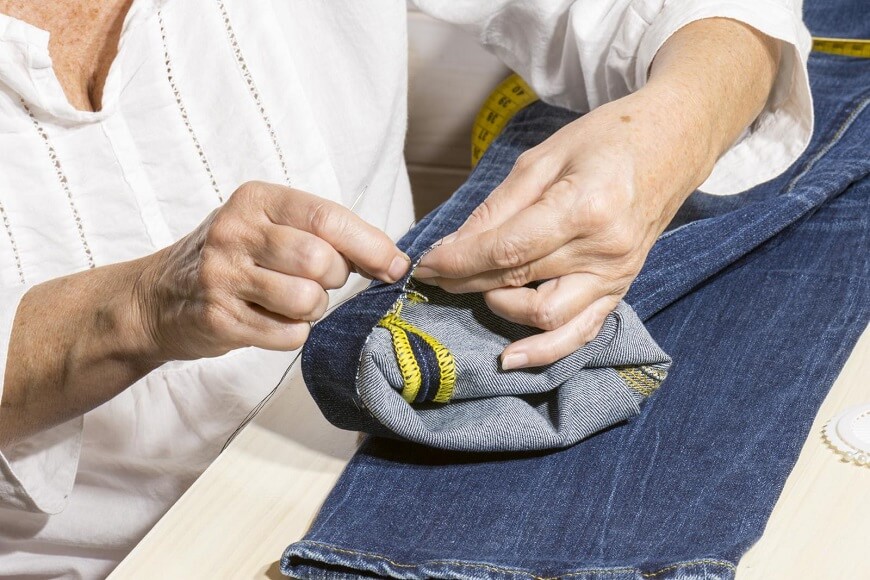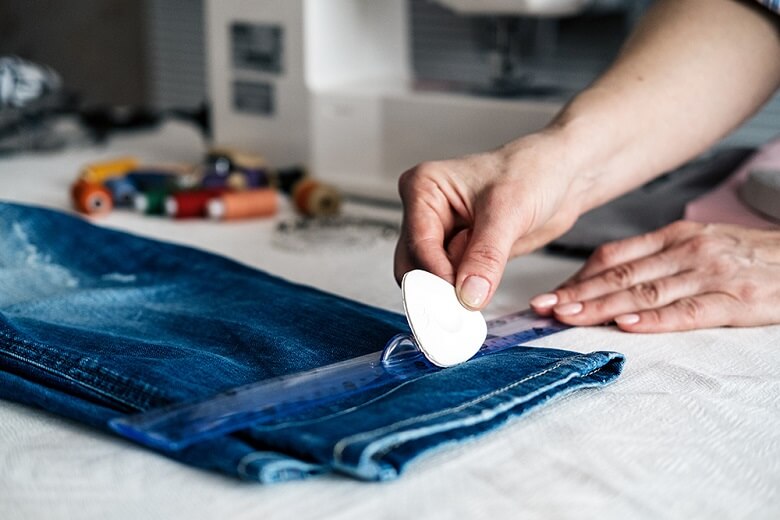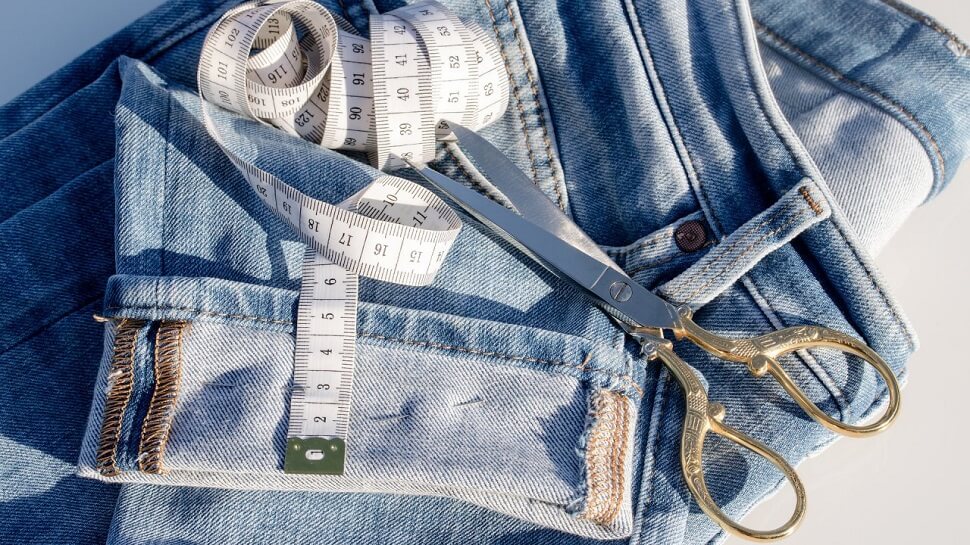Finding jeans that fit perfectly right off the rack without nips or tucks is difficult. Jeans are still not high on clothing items that need tailoring. While finding jeans that fit your form properly is vital, there are other ways to alter a nearly-perfect pair of jeans and get a tailored look. To help you on your trouser alteration journey, we’ve collected our finest tailoring tips, from how to hem jeans so they precisely fit your shape to identifying which kinds of denim can even be fitted in the first place.
Read on for some helpful tailoring tips on how to customise your jeans.

#1 – Understand Which Trouser Alteration:
Some types of denim are difficult to modify. The raise (the area where the waistband rests on the body), hips, and crotch of a pair of jeans should already be well-fitting. It’s time to part ways with the jeans and look for another pair that fits in these areas if they don’t cling to your hips, pinch you too tightly, sit too high or low on the waist, or don’t sit properly at the crotch.
Also Read: Things You Should Consider Before Leather Jacket Alterations
#2 – Strategically Alter The Waist:
With denim pants, waist gapping can be a problem, but a skilled tailor can adjust a waistband to nip it in slightly. Just be careful not to reduce the waist of the jeans by more than one to one and a half inches, as doing so can alter the placement of the pockets and the shape of the front of the jeans. Not to add, you’ll probably need to adjust your hips to keep the right line. Using a belt or locating a pair of pants that better fits your hips is often easier (and less expensive).
#3 – Baggy Jeans Can Be Tapered For a Tighter Look:
Perhaps you found a pair of jeans that fits through the waist and hips but has too loose thighs. Or maybe you have an old pair of straight-leg jeans and prefer thin jeans. In either case, a professional tailor may easily taper the legs of jeans to make them thinner as long as you don’t significantly modify their style.
The tailor will have you try on the jeans and then pin along the inseam length to taper your jeans for a more streamlined leg look (the line of stitching running down the inner leg).
A more narrow (“tapered”) leg opening will be created by turning the jeans inside out and sewing. Depending on the extra fabric, you could cut it out of your fitted jeans or stitch it inside. The bottoms of the jeans may need to be re-hemmed if the thighs and calves are being taken in. If you want your jeans to look unaltered, ask the tailor for an “original hem.”
#4 – Before Altering Your Jeans, Wash Them To Prevent Shrinking:

You should wash your new jeans a few times before taking them in for alterations. Turn your jeans inside out and wash them on your machine’s gentle cycle in cold water. After washing, hang the clothes to dry. A few washing items guarantee that your jeans won’t shrink any further and that the tailor works with the “final” shape and length.
Also Read: Questions to Ask Your Local Tailor During Dress Alteration Service
#5 – Shorten Long Jeans With Hemming:

Have you found a pair of jeans with the right length but the wrong shape? Good news: The easiest trouser alteration is to shorten too-long jeans. A tailor or sewist can shorten by removing some fabric and reworking the hems or taking them differently without cutting the cloth.
Before shortening the jeans, your tailor will mark the proper length using chalk or pins. You can request an “original hem,” which entails removing the jeans’ original hems and reattaching them once the excess fabric is removed from the legs. It may raise the cost of your alterations, but it will ensure that your jeans’ hems are properly finished.
The leg shape of the jean may need to be altered if you want to hem it by more than one to two inches, which can be challenging to do with bootcut or flare jeans. Additionally, your jeans should be cut to match the style if they are faded or damaged. To get the proper length, bring the shoes you’ll use most often with the jeans.
Conclusion:
Ask the store whether they offer alteration services if you’re buying a new pair of jeans that requires a few adjustments. Some major shops offer free or reduced hemming. Finally, ask about the tailor’s experience working with denim fabric, as tailoring jeans may require unique sewing methods and tools.
Wondering about an alternative professional service for tailoring your jeans and trousers? Go with Hello Laundry, a prominent alteration service that gives professional tailoring tips and the best solution for trouser alteration.



